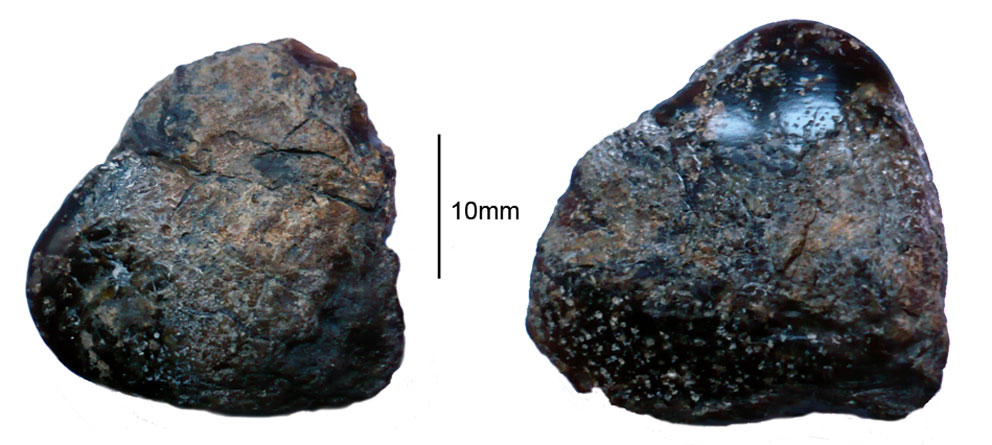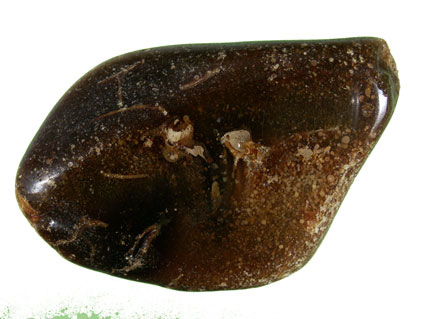|
An
example of Amber found in situ in the cliff section on the North Coast
of Sheppey by Danny Hogburn Oct. 2013
|
|
 |
|
|
International
Summit Forum of Amber, 2013: Invited Presentation
|
|
|
English
amber
|
|
|
Ed A.
Jarzembowski
|
|
|
There is
another native Eocene amber in England called Highgate copalite, found
in the London Clay Formation during excavation in the eighteenth-nineteenth
centuries on what was the outskirts of London. It is of early Eocene
(Ypresian) age like Fushun amber, but unlike the latter, it's thought
to be of angiosperm (flowering plant) and not gymnosperm origin (although
even a pine source has been suggested based on gas chromatography-mass
spectrometry analysis!) The recently discovered Oise amber in nearby
France is of comparable age and also of angiosperm origin, but from
a different family (Fabaceae and not Burseraceae). X-ray diffraction
analysis suggests that copalite resembles glessite, another (but uncommon)
Baltic amber mineral species, whose exact plant origins have also proved
controversial. No inclusions have been reported in Highgate copalite,
but it should be looked out for in coastal outcrops of the London Clay
in South East England (in the provincial counties of Kent and Sussex).
...'
|
|

|
|
|
German glessite - one of the rarer Eocene Baltic ambers - very similar to Danny's specimen |
|
 |
|
A small specimen of the original Highgate amber from its discovery in 1811. The image includes the original specimen label |
|
| For further reading click here for a PDF of oldest account of Highgate amber | |
|
The nature and fate of natural resins in the Geoshere III.* Re-evaluation of the structure and composition of Highgate Copalite and Glessite. By Anderson & Botto 1992. To access the PDF, click Here |
|
|
My
thanks to Dr Ed A. Jarzembowski For his help with providing a background
to this page.
|
|
|
and
to Danny hogburn for providing images of the specimen
|
|
